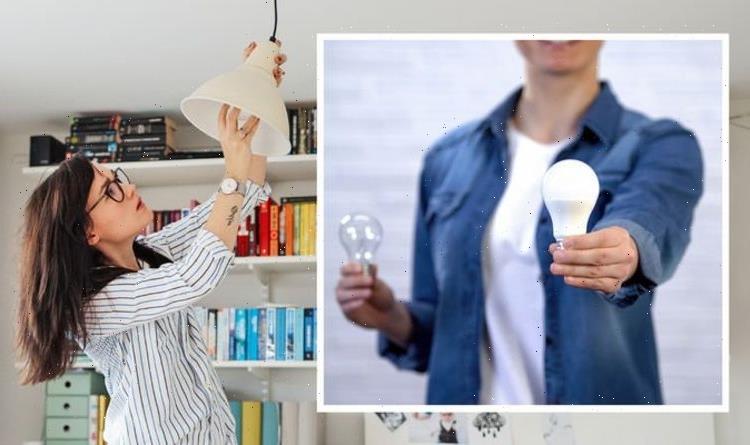Halogen lightbulbs are banned in the UK from tomorrow, Wednesday, September 1 and fluorescent light bulbs will follow suit. The Government planned the move back in June and the shift to LED light bulbs will cut 1.26 million tonnes of CO2 – the equivalent to removing over half a million cars from UK roads. The new rules are part of “tighter energy efficiency standards for electrical appliances as the UK builds back greener” the Gov.uk website explains and will help British consumers save £75 a year on their energy bills. Here’s everything you need to know about the changes to lightbulbs
Halogen light bulbs will not be sold from today as part of the UK’s wider efforts to tackle climate change.
The removal of fluorescent lights from shelves will take place from September 2023.
Instead, consumers are urged to buy LED lights instead.

We use your sign-up to provide content in ways you’ve consented to and to improve our understanding of you. This may include adverts from us and 3rd parties based on our understanding. You can unsubscribe at any time. More info
Why have halogen bulbs been banned in the UK?
Halogen bulbs are hugely inefficient, especially when compared to LED bulbs.
The average halogen bulb will use around £11 worth of electricity each year, while an LED light bulb has a typical annual running cost of £2 a year.
While halogen bulbs are slight cheaper than buying LEDs, they cost more to use and burn out quicker.
LED bulbs will last approximately 15-20 years while the lifespan of a halogen bulb is only around two years.
Do I need to remove all the halogen bulbs from my home?
If the halogen bulbs in your home are still working, there’s no need to remove them until they’ve burnt out.
Once they are no longer fit for the job, switch them with an LED bulb.
If you’d liked to start saving money – and contributed to helping the environment – you can swap the halogen bulbs for LEDs before they stop working.
Most LED bulbs are available with Edison or bayonet fittings so you can just swap the halogen for LED in most cases.
But, if halogen bulbs are fitted within the ceiling, they could be connected to a transformer which many not be compatible with new LEDs.
The transformer will need to be replaced with a compatible LED driver and it is advisable to ask a professional electrician for help with this.
Halogen vs LED
While the cost and duration have been outlined, there are other significant differences in halogen and LED lightbulbs.
Halogen bulbs can get rather hot when they’ve been on for a while, whereas LED lights don’t really heat up at all.
Therefore, LED lights are a safer option.
LEDs also give people more creative freedom as there are so many options on the market.
This measure is expected to mean that LED lightbulbs will account for 85 percent of all bulbs sold by 2030.
Energy Minister, Anne-Marie Trevelyan said: “We’re phasing out old inefficient halogen bulbs for good, so we can move more quickly to longer lasting LED bulbs, meaning less waste and a brighter and cleaner future for the UK.
“By helping ensure electrical appliances use less energy but perform just as well, we’re saving households money on their bills and helping tackle climate change.”
Minister for Climate Change, Lord Martin Callanan added: “Flicking the off-switch on energy inefficient light bulbs is a simple way that households can save money at the same time as saving the planet.
“Phasing out halogen bulbs in favour of LED alternatives that last longer, are just as bright and cheaper to run, is another way that we are helping tackle climate change.”
Source: Read Full Article





